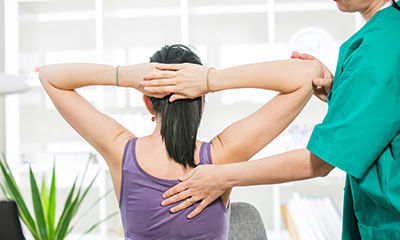Top Questions on Managing Sciatica
I am a male, student studying college 2nd year. I have sciatica problem 1 and half years, and I also do a solo porn 4 ye ...
Ask Free Question
It looks like you are anaemic. And also you have to check with your vitamin and calcium, if the bones are weak then automatically the pain gets triggered more as there is less energy during any metabolic activity.
Is there any homeo relief for left sided sciatic pain since I am suffering with radiating pain from left side buttock to ...
Ask Free Question
Untill the compressed nerve is not removed there will be pain. Do stretching exercises, hot compression twice a day, take electrotherapy for 2 weeks the pain will be removeved completely.
Hello doctor, I have been suffering from mild sciatica on my right side since last year. Then six months back, I started ...
Ask Free Question
Hi lybrate-user. Nothing serious. Don't panic. It looks like mild deficiencies and mechanical imbalance in&around your spine and pelvic junction. *get enough rest, sunlight, adequate exs, walking, posture and body mechanic's while lifting and pushing activities. Apply some hot water bag (moderate temp. If any help and guidance reach us.
Hav a lower back pain (sciatica) and gone through physiotherapy for more than a month it did not give me any good result ...
Ask Free Question
Follow these herbal combinations for complete cure ras raj ras 1 tablet twice a day vatari awleh 10 gm twice a day.
I have pain in my right lower back, right hip and right groin area and the right groin area is swollen too from the last ...
Ask Free Question
This simple stretch helps relieve sciatica pain by loosening your gluteal and piriformis muscles, which can become inflamed and press against the sciatic nerve. 1.lie on your back with your legs extended and your feet flexed upward. 2.bend your right leg and clasp your hands around the knee. 3.gently pull your right leg ac 4.ross your body toward your left shoulder. Hold it there for 30 seconds. R ... more
Hi I want to know which department doctor I have to consult for sciatica nerve pain? ...
Ask Free Question
Neuro surgeon take pregabelin 75 after dinner daily after dinner for 5 months nortipan m take daily after launch x 180 days daily.
Can a disease like sciatica be cured by panchakarma therapy? क्या पंचकर्म से साइटीका जैसी बिमारी ठीक हो सकती है? ...
Ask Free Question
•rest. Avoid doing things that require you to bend at the hip or put a lot of pressure on the hip. Avoid sleeping on the side of your hip that is painful and sitting for long periods of time •cold and heat. Treating pain with heat and cold may help. Wrap an ice pack or a bag of frozen vegetables in a towel to ice your hip. A warm bath or shower may also help reduce your pain and prepare your muscl ... more
I am 45 years old. I am suffering from sciatica pain. Kindly suggested me the homeopathic medicine for pain relief. ...
Ask Free Question
Do these exercises to relieve sciatica pain 1. Reclining pigeon pose— pigeon pose is a common yoga pose. It works to open the hips. There are multiple versions of this stretch. The first is a starting version known as the reclining pigeon pose. If you are just starting your treatment, you should try the reclining pose first. While on your back, bring your right leg up to a right angle. Clasp both ... more
My dad is having sciatica problem in lower limb, he is having burning sensation in his left leg in every 10-15 mins. Pls ...
Ask Free Question
Do these exercises to relieve sciatica pain 1. Reclining pigeon pose— pigeon pose is a common yoga pose. It works to open the hips. There are multiple versions of this stretch. The first is a starting version known as the reclining pigeon pose. If you are just starting your treatment, you should try the reclining pose first. While on your back, bring your right leg up to a right angle. Clasp both ... more
I have a family member who has sciatica. He has also had hip replacement surgery, so he has normal pain that won't every ...
Ask Free Question
It looks like you are weak and it might be due to anaemia. You need to consume good iron diet in the body (haemoglobin and folic acid supplement) if not it is difficult for you to cope up the body metabolism. Since you are very young this might the reason. The reason might be due to back pain which is called sciatic nerve compression and it happens due to weakness where in the inflammed disc is no ... more

